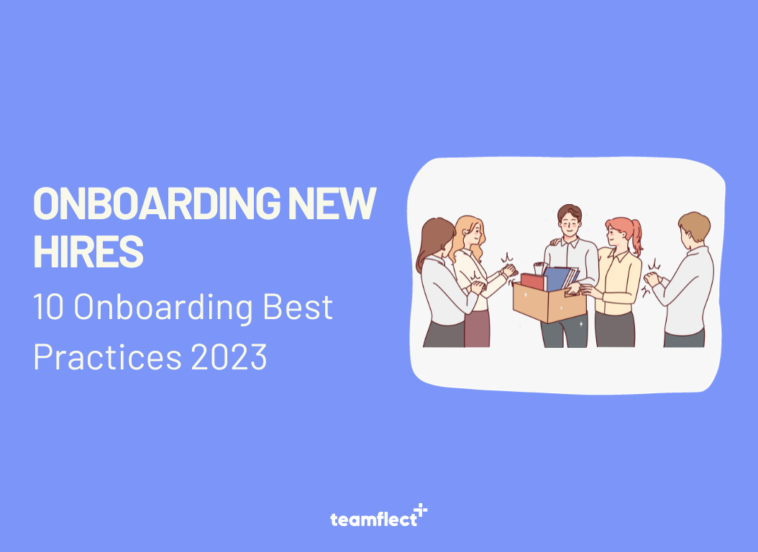It is never easy being the new guy in town! Starting a new job, while exciting, can also be an uncomfortable experience. That is why the way we are onboarding new hires plays a massive role in how their carreers play out in our organizations.
While we do hate the term probation period, we have to admit that the first couple of months in a company can set the pace for how the rest of the employment can play out.
This is why onboarding new employees in the best possible way we can is an extremely important practice in performance management.
In this article, we made a list of some of our favorite onboarding best practices in order to help you welcome your new employees into the company. We also took the liberty to create a brief checklist of things to cover before onboarding new hires. A pre-preboarding if you will. Enjoy!
Table of Contents
Preparing for Onboarding New Hires
Developing a Comprehensive Onboarding Plan
A well-designed onboarding plan serves as a roadmap for new hires, guiding them through their initial days and weeks with the organization. It should include a detailed timeline, clearly outlining what tasks or activities will take place at each stage of the onboarding process. Your orientation plan can include but shouldn’t be limited to:
- Attending orientation sessions.
- Participating in training sessions.
- Partaking in mentorship programs.
The plan should also outline the roles and responsibilities of different team members involved in the onboarding process, ensuring that everyone is on the same page and knows what is expected of them.
Coordinating with Relevant Departments
Onboarding is a team effort that involves various departments, such as HR, IT, Facilities, and others. It is essential to coordinate with these departments to ensure that all necessary arrangements are made before the new hire’s first day. This could involve:
- Setting up the new hire’s workstation.
- Providing necessary access to tools and systems.
- Arranging for security badges or parking passes.
Get All the Paperwork in Order
Giving fresh employees a head start on administrative duties, such as setting up a business email address or finishing HR paperwork, will prevent their first day from being spent filling out paperwork. You might encourage them to work on the following documentation before they begin:
- Tax forms
- Direct deposit forms
- Noncompete or nondisclosure agreements
10 Best Practices for Onboarding New Hires
To create the best employee onboarding experience, you need to implement an effective program and stick to employee onboarding best practices.
Organizations should focus on developing effective onboarding programs by using best practices for onboarding new employees.
You will benefit from investing in the best onboarding programs which can create a solid plan that will introduce your new hires to your company culture, values, and mission while clearly stating their roles and responsibilities.
New hire onboarding best practices are essential to create a positive experience for your employees. To deliver the best employee onboarding experience, you need to personalize the process of onboarding new hires by considering their roles, preferences, and development needs.
Here is our list of employee onboarding best practices that will help you manage your onboarding with ease!
1. Start pre-boarding before the first day
Starting the onboarding process before the first day of a new hire’s arrival is a crucial onboarding best practice that can greatly impact their experience and overall success with the organization.
Pre-boarding sets the stage for a smooth transition and helps new hires feel welcomed and supported even before they step foot into the office or log in remotely.
We promise we are not going to milk how the word boarding is also used in aviation any further but for the sake of this example, stick with us.
Preboarding is a lot like checking in for a flight online before you get to the airport. Just as you save time and energy by checking in ahead of time, your employees save time, and energy, and get spared some confusion when you practice preboarding.
- Send welcome emails with the necessary information
- Provide access to resources, tools, and software in advance
- Assign a buddy or mentor to help new hires feel supported
One of the key best practices for onboarding new hires when it comes to preboarding is sending out welcome e-mails with all the necessary information your new hires might need such as login details, or even fun tidbits of information such as which bodega around the office makes the best muffuletta sandwich.
One of the biggest challenges for someone on their first day is getting used to all the different interfaces and software in their new organization. The screens that may seem mundane to you right now, will appear alien and confusing to your new employees.
That is why when you’re onboarding new hires, it is key that you give them access to the software and resources they will be using beforehand. You’ll be surprised at just how many of your new hires are willing to do their homework before they come in.
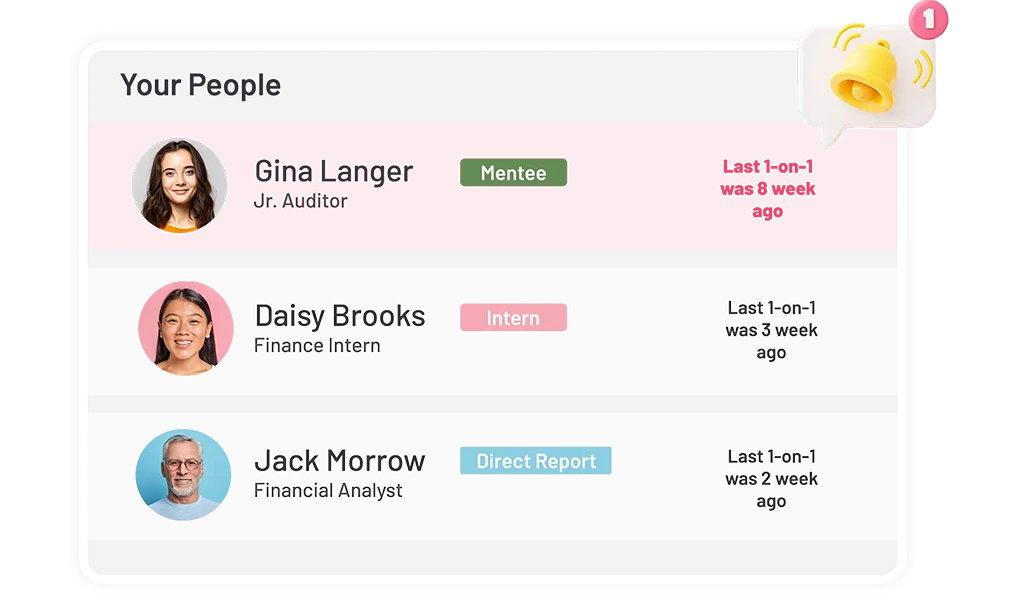
The final piece of the preboarding puzzle, when you’re onboarding new hires, is to assign them a buddy or mentor. Not everybody feels confident asking questions when they first arrive. Giving your new employees someone to ask questions to and learn from is a great preboarding best practice.
If you are currently practicing remote team management and your team is online, or you’re simply making use of a performance management system every day, you need to make sure your system allows for customizable relationship labels.
Teamflect is an excellent example of that. Teamflect users can assign custom labels to their relationships with other employees such as “Mentor/Mentee, Manager/Direct Report, etc.”.
2. Create a comprehensive orientation plan for onboarding new hires
Onboarding new hires is a tricky process and like every other tricky process that takes place in the workplace, there is no going into it willy-nilly.
Similar to employee engagement action plans that we’ve covered in previous articles, you need to create a comprehensive orientation plan when you’re onboarding new employees. Here are three things your plan really should be covering:
- Providing an overview of company culture, values, and mission
- Explaining job expectations, roles, and responsibilities
- Conducting thorough training on company policies, procedures, and processes
Nobody knows your organization better than you do. Letting your team know just what kind of team they will be joining is key. That is why you should always provide an overview of the company culture, values, and mission.
Discussing what the company is like is important when onboarding new hires. What is more important, however, is discussing what their role in the company will be like.
When onboarding new hires, it is imperative that they know just what exactly is needed of them and more importantly, just how they can achieve those things.
This brings us over to the third and final point. Telling new hires what is expected and needed of them is very important. That is undeniable. What might be even more important than that is to give them the means to actually get there through commitment and training sessions.
3. Personalize the onboarding experience
Nobody enjoys being boxed in or being grouped into a bunch of others. That makes a lot of sense. People like the experiences they well… experience, and the adventures they partake in to be exclusive to them. And for good reason.
Everybody learns differently. Everyone’s onboarding experience should be unique to them. Here are three tricks that might actually work:
- Tailor the onboarding process to individual roles and departments
- Understand new hires’ preferences, strengths, and areas for development
- Provide opportunities for new hires to share their goals and expectations
Instead of hosting massive, crowded events when you are onboarding new hires, hosting small meet-ups and focusing on the actual individuals always proves to be a success. The onboarding process should be tailor-made for each individual being onboarded.
If you want to customize an experience for someone, first you’ll need to learn a lot from that someone. Learning about the employee you’re onboarding is a great way to show that you care. Conducting pulse surveys is always a great idea to learn more about your employees.
More often than not, you don’t even need fancy events and icebreaker games. What you truly need to break the ice goes through regular, simple conversation.
4. Foster a positive and inclusive culture
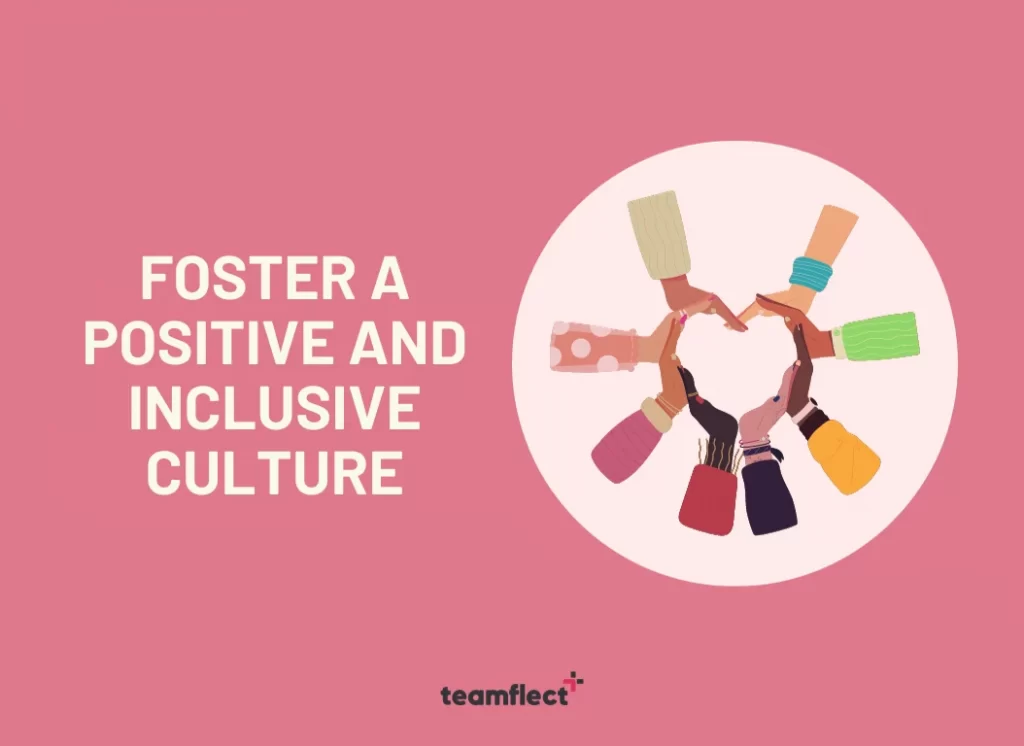
Diversity and inclusion are two principles in today’s workplace that can’t and shouldn’t be avoided. Diversity management is a key skill that every leader should have in their arsenal whether they are remote or not. Three ways you can foster a culture of positivity are as follows.
- Promote diversity, equity, and inclusion in the workplace
- Encourage team building and socialization activities
- Provide opportunities for new hires to interact with colleagues at all levels
Promoting diversity, equity, and inclusion in the workplace has a plethora of benefits when it comes to onboarding new hires such as increased employee engagement, and diverse cross-functional teams.
Teambuilding activities can be priceless when it comes to onboarding new hires and making them feel welcome. We’ve highlighted some of the best activities right here: Virtual Teambuilding Activities.
During the process of onboarding new hires, it is very important to make sure they are interacting and exchanging ideas with people from all sorts of different departments and levels. Not only does this create a culture of empowerment, but also fosters creativity in the workplace through creating a platform where ideas can be exchanged.
5. Assign a mentor or buddy
Assigning a mentor or buddy to new hires can be a game-changer when it comes to onboarding success. Think of it like having a friendly guide who can show you the ropes and help you navigate the ins and outs of your new workplace. Having a mentor or buddy can make the onboarding process feel less overwhelming and more enjoyable, creating a positive experience for new hires. If you are looking to start a mentor/buddy system, be sure to look cover these bases:
- Pair new hires with experienced employees as mentors or buddies
- Provide a designated point of contact for questions and support
- Encourage mentorship and relationship-building for knowledge transfer
When veterans are paired with new hires, they can offer insider tips, answer questions, and provide insights into the company culture and dynamics that may not be immediately apparent. They can help new hires understand the unwritten rules, navigate the organizational structure, and introduce them to key stakeholders, helping them feel connected and integrated into the team.
Assigning a mentor or buddy is not only beneficial in onboarding new hires but also for the mentors or buddies themselves. The entire opportunity is both rewarding and empowering for the veterans too, letting them know that their tenure in the organization is well respected.
6. Provide resources for continuous learning and development
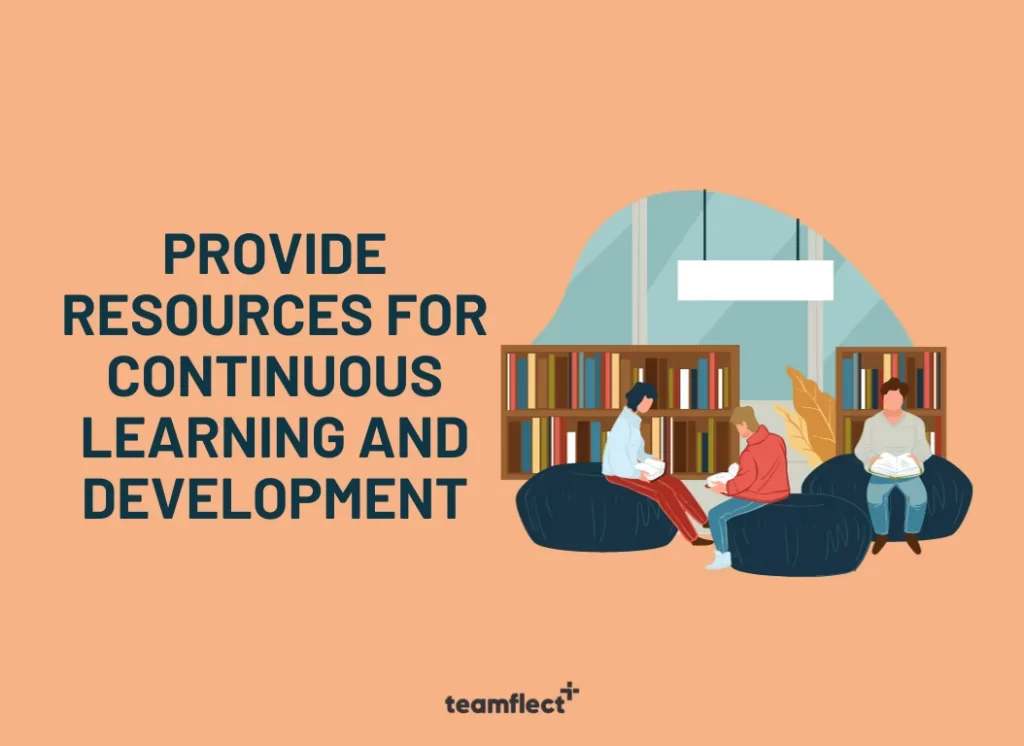
Don’t get us wrong. We are not stating that learning opportunities are only good when onboarding new hires. On the contrary, learning doesn’t stop after the initial onboarding process – it’s an ongoing journey that helps employees grow and thrive in their roles. Like each journey, it is incredibly important to start on the right foot!
- Offer access to training programs, workshops, and online resources
- Encourage new hires to seek feedback and ask questions
- Provide opportunities for skill-building and career advancement
One way to support continuous learning and development is by providing accessible resources that new hires can tap into. These resources can come in various forms, such as online training programs, webinars, workshops, or even access to a company library or learning portal.
The end goal here is to empower new hires with the tools they need to expand their skills, knowledge, and expertise.
It’s important to regularly review and update the available resources to ensure they remain relevant and useful for new hires. Soliciting feedback from new hires on their learning needs and preferences can also help in tailoring the resources to their specific requirements.
7. Communicate regularly and transparently
Now this right here is advice we were scared to include in this list of best practices for onboarding new hires, simply because it is the “Water is wet.” of inspirational statements. Yes, it is true but it has also been tried to death. We did add it to the list of just how powerful of a skill it is. It can’t be ignored.
- Keep new hires informed about company updates, changes, and news
- Provide regular check-ins to address questions, concerns, and feedback
- Foster open and honest communication channels for new hires to express themselves
Keeping the communication channels open is always a great idea no matter which approaches you are taking to leading remote teams. Checking in with your new hires every so often and communicating regularly and effectively is always a winning strategy.
Conducting team check-ins at regular intervals is a great way to make sure everyone gets to know each other very well. The recent wave of tech layoffs might have scared a lot of people. Checking in on them at least weekly is extremely important.
Making use of employee pulse surveys when checking in with your team is a great idea to keep everything quick, clear, simple.
8. Offer opportunities for networking and collaboration
Creating opportunities for networking and collaboration can be a fun and effective way to enhance the onboarding experience for new hires. It’s not just about getting the job done, but also about building relationships and fostering a sense of community within the organization.
- Provide chances for new hires to connect with colleagues from different teams
- Encourage participation in team-building activities and events
- Foster a collaborative work environment that promotes knowledge sharing
One way to facilitate networking and collaboration is by organizing team-building activities or social events that encourage new hires to interact with their colleagues in a relaxed and informal setting.
By offering opportunities for networking and collaboration, organizations can help new hires feel more connected, engaged, and supported in their new role. Building relationships and fostering a sense of community can contribute to increased job satisfaction, team cohesion, and overall retention of new hires.
9. Evaluate and refine the onboarding process
Should this entry have been number three or two! Yet here we are. If your organization wasn’t recently founded, this means that you have an already existing process for onboarding new hires. Which is great because refreshing and refining your way of onboarding new hires is far more fun than rewriting an entire system.
- Collect feedback from new hires and managers to identify areas for improvement
- Review and refine the onboarding process based on feedback and outcomes
- Continuously strive to enhance the onboarding experience for new hires
Asking for feedback from your employees regularly is a great way to find our about their process of adaptation to a new workplace.
Once feedback has been collected, it’s important to analyze and identify trends or patterns to inform the refinement of the onboarding process. This can involve making adjustments to the content, format, or timing of onboarding activities, as well as addressing any identified issues or concerns.
If you’re using feedback software with analytical capabilites then you can easily ask for feedback in bulk, pass them through the a generative a classic time capsuel
10. Software for Employee Onboarding
There are many different employee onboarding software out there you can use when you are onboarding new hires. That being said, the best idea just might be to create a system where new hires can easily et a grasp of things and get to being productive. That goes through using a simple, innovative, and easy to use performance management system .
While there are many incredible task software or OKR software available that can function as onboarding tools. For Microsoft Teams users, however, the best alternative is Teamflect by a long shot.
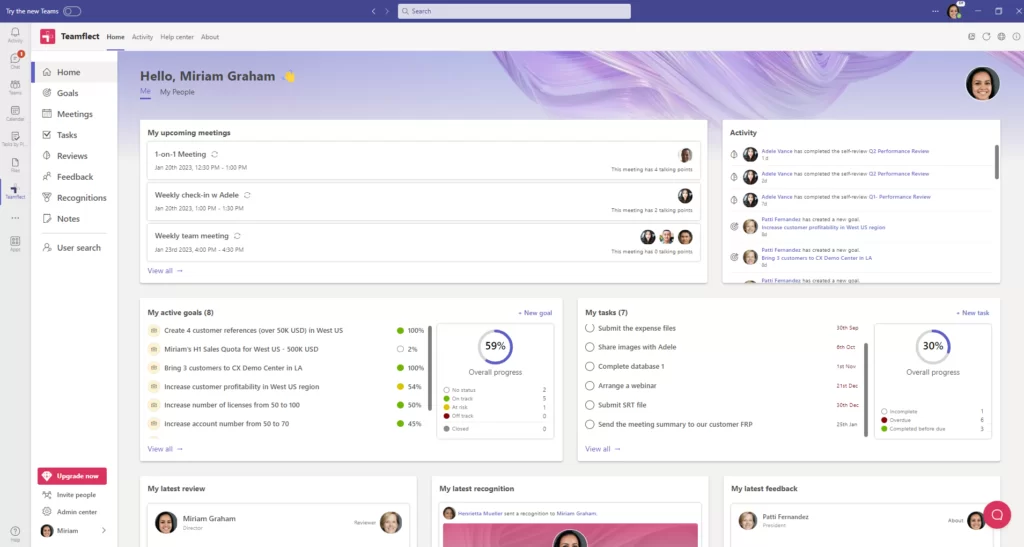
Teamflect is an all-in-one performance management system that makes onboarding new hires effortless. Teamflect lets users assign and create tasks, exchange feedback through customizable feedback templates, conduct entire performance review cycles, and exchange customizable recongitions without ever having to leave Microsoft Teams.
Teamflect’s layout is reminscent of a well organized kitchen. Even a complete stranger can walk in and find where the plates or spices are, the same way a new hire can open Teamflect and immediately be able to use the performance management platform with ease!
In A Nutshell
Achieving the best employee onboarding experience requires a thoughtful approach that should go beyond the first day of work.
These best practices for onboarding new hires will guide you when it comes to improving your employee onboarding. Starting with preboarding, your organization should set the stage for a positive onboarding experience and give the essential information.
Using employee onboarding software, Teamflect, will allow you to create the best onboarding experience and make it efficient for both new hires and existing teams.
By incorporating these onboarding best practices, organizations can create the best onboarding experience that will be the foundation for long-term success and job satisfaction.
Frequently Asked Questions
What is onboarding new employees?
Onboarding new hires is the process of integrating and orienting new hires into the organization.
What are the four phases of onboarding?
Pre-boarding: This period of time consists of the time before the new employee’s first day on the job and involves activities such as completing paperwork, setting up necessary accounts and systems, and providing initial information about the organization and the onboarding process.
Orientation: The orientation phase typically takes place on the new employee’s first day or week and includes activities along the lines of introductions to the team and company culture, reviewing policies and procedures, and providing an overview of the job role and expectations.
Initial training: This phase focuses on providing the new employee with the necessary training and resources to perform their job effectively.
Ongoing integration: Ongoing integration is what comes after the initial training and focuses on continued support and integration of the new employee into the organization. This phase can often be referred to as a probation period in many organizations.
How expensive is it to onboard new hires?
The cost of onboarding new hires can vary depending on various factors, such as the size of the organization, the complexity of the roles being onboarded, and the resources and technologies used in the onboarding process.
Costs may include expenses related to training and orientation programs, hiring managers’ time, HR staff time, paperwork and documentation, onboarding materials and resources, and potentially onboarding software or technology.
While there may be costs associated with onboarding, investing in a well-designed onboarding process can yield long-term benefits in terms of increased productivity, engagement, and retention of new employees.
Why is onboarding important for new employees?
Onboarding is important for new employees because it sets the foundation for their success and integration into the organization. It helps new hires feel welcomed, supported, and equipped with the necessary tools and resources to perform their job effectively.
What is onboarding software?
Onboarding software is a type of technology tool that helps organizations streamline and automate the onboarding process for new employees. It typically brings with it features such as electronic forms and document management, task and workflow automation, communication and collaboration tools, and analytics and reporting capabilities.


